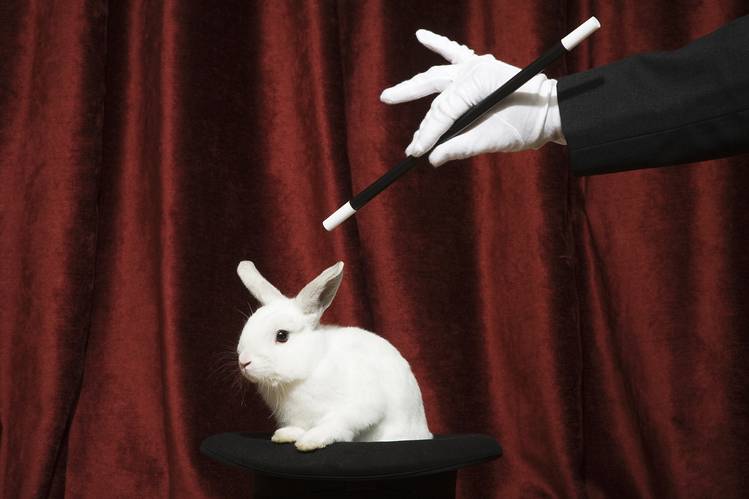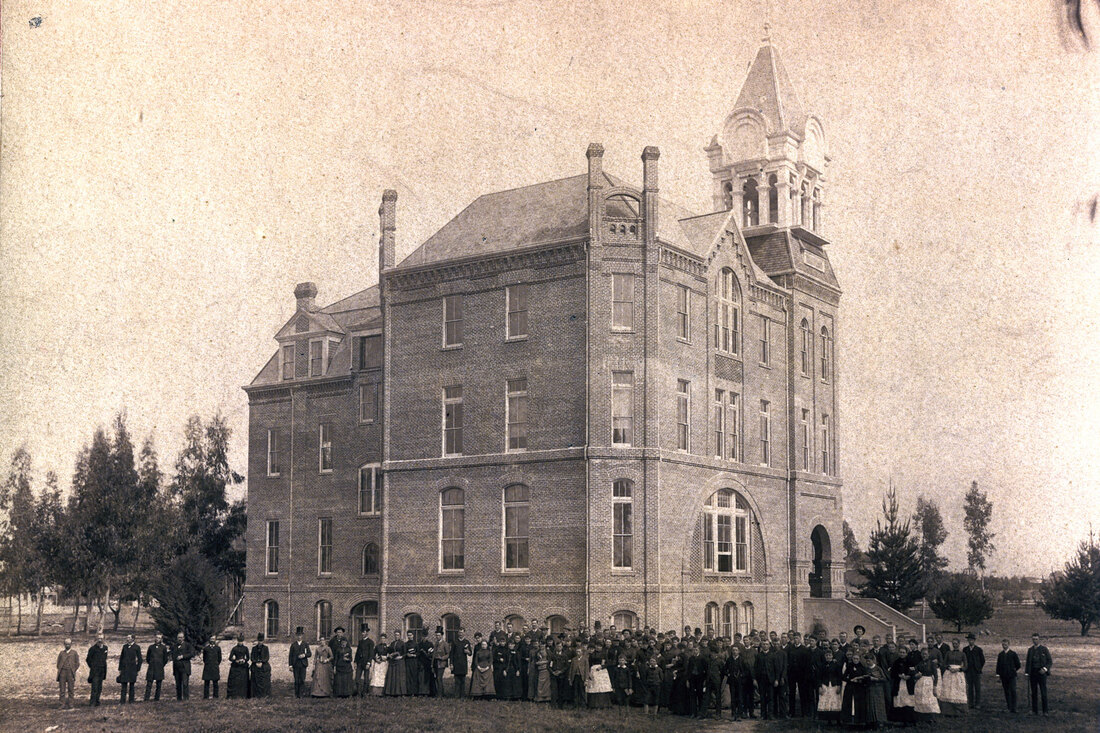|
Growth in hiring is typically a good thing. Why thank you Captain Obvious. While growth in hiring may very well be a good thing, successfully navigating the hiring process is an entirely different story.
Successful hiring can make or break the performance of a company. Unsuccessful hiring on the other hand creates all sorts of fun challenges for folks like you and me. In fact, Harvard Business Review identifies 80% of employee turnover is due to bad hiring decisions. What does this mean? First, let’s look at the potential tangible repercussions. According to Dice, one of the larger online job boards, a poor hiring decision for a candidate earning $100,000 per year could cost, on average, $250,000, and that expense comes right off the bottom line. That’s scary stuff! Basically, if the hiring decision you made ends poorly you can expect that mistake to represent 2.5 times the cost of whatever the salary is of the person you are hired. Rather than fearing the hiring process, or having it work against us, we should approach it with a strategic and open minded process to ensure success. Want to improve your hiring practices? Employee (pun intended) these 15 tips: 1. Why Would Someone Pick You/ Your Company? No longer is it realistic for employers to have the notion that just because you are in the drivers’ seat administering the interview means you have all the power. In fact, it’s quite the opposite as the current market is more in favor of the job seeker as they have plenty of options to choose from, you being one of them. If you want the best of the best you have to be able to speak to WHY people should consider you and your company. Your story must resonate with your interviewees. 2. Character Over Competency The best leaders use this philosophy – hire people who will bleed for your cause and will make the right decisions even in the darkest of hours. Competency in most jobs can be taught, character is what the person has developed well before you came around so don’t think you can change it easily, if at all 3. Behavioral Based Interviewing A great tactic while interviewing is to ask people what they would do in certain situations. This causes people to have to think and adjust in the moment. You aren’t trying to catch someone doing something wrong here, more or less understand their thought process and how they handle certain tasks or situations 4. Know What You Want Before You Interview All too often I hear people say, “we need to interview some people first to better understand who we are looking for”. You should never need to interview someone in order to help you understand who or what you are looking for. If you use this practice most often what it means is you don’t know what you’re doing from a leadership perspective. Tough love I know but it’s highly important you know what you want and need before you go looking for it during interviews. Wasting people’s time so you can figure out your direction with hiring isn’t advisable and it’s unprofessional. 5. Consult Others Before you go about the interview process speak with other managers about their experiences and your plans for your hiring process. The best advice typically comes from those who have been there and done it before that way you can learn from their successes and mistakes 6. Make Sure You Know And Understand Your Vision Somewhat similar to number #1 however this focuses on you and your specific team. Put yourself in the shoes of the person interviewing and think “Why would I want to work for her/ him?” “Does this vision excite me?” “What is my role in the future of this company?” 7. Best Foot Forward A helpful reminder if nothing else, remember when people are interviewing you are witnessing their ideal self, seeing them at their best. Asking questions which will give you better insight into who they are day-to-day, not just during your interview, are always good ways to get a better glimpse into who they are in a very day setting. 8. Tell Them Your Leadership Philosophy This is especially important if you are hiring the person to join your team. This is also very different than #6 which talks about the vision for your team or company. Here you are sharing with your interviewee how you lead and what you believe in. A great precursor question to this is asking the candidate what type of leadership they like and want in their next career 9. Interview Tests It’s a great practice to test candidates on their abilities on the spot, so long as the test is directly relatable to their core job function. If you are interviewing a Mechanical Engineer, for example, it is highly suggested you test them on the exact work they would be doing for you (ie Solidworks modeling) 10. The Reference Trick I personally think references are a waste of time. Why? Because the people on the other end of the phone are doing nothing but singing the praises of the person you are interviewing. In over a decade I can name on one hand the number of reference checks I’ve performed which brought about a poor review. Here’s how to get around it – when you are on the phone with the reference which was provided by your interviewee ask who else the interviewee worked with and then try to phone that person. This person won’t be prepared for your call and may provide you with more realistic insight into the persons’ work ethic and behaviors. 11. Put Yourself In Their Shoes Interviewing isn’t easy. In fact it can be downright terrifying for some people. Try looking beyond the interview. Just because someone’s interview isn’t a glowing success, or they may seem overly nervous, doesn’t mean they aren’t a good catch. Just because someone interviews well doesn’t mean they will perform well in the job. 12. Job Description = Performance Expectations It’s time we ditch the HR job descriptions and actually write and talk about what the newly hired employee will be expected to do from a performance perspective. If you’re hiring for sales, interview your candidates based on the quotas and metrics you’ll have in place. Ask how they will achieve those goals, what their strategies will be, etc. 13. Know Your Non-Negotiables What are you not willing to tolerate? When I’m in a position of hiring my two non-negotiables are attitude and integrity because both of these are things we have 100% control over. Knowing that I then ask questions around those two to see how they view my perspective on my non-negotiables. Asking interviewees their non-negotiables will also give you an idea of where their priorities land 14. Challenge Your Own Mindset One of the most common mistakes leaders make when hiring is they select candidates that remind them of themselves or select candidates that are beneath them skill wise. Great leaders surround themselves with people who are not only competent but will challenge the leader to be better. 15. Don’t Hire If It Isn’t What You Want I hired an employee that was most of what I was looking for but through the interview I uncovered some things that were less than great. Up to this point I had interviewed so many people that I just decided to move forward with this particular candidate and did the whole ‘cross your fingers’ bit in hopes they would work out. From that experience I can tell you it is always better to not hire when in doubt than hire because you need to fill a spot.
0 Comments
We’re constantly bombarded with a litany of articles, studies and discussions highlighting the generational differences in the workplace. These discussions often confuse and mislead readers by zeroing in on ‘key characteristics’ which supposedly define a generation while subtly stereotyping it at the same time. One of the topics that comes up often in these discussions is what makes for a good employee. This topic has permeated the business world for decades long before Gen-Z and Millennials entered the workplace over the last 10+ years causing a current day telenovela in the business world.
While the generations entering the workforce, and or exiting for that matter, may have a difference of opinion on what they want out of their careers and what they need in order to be happy in their jobs, there is one common trait which is synonymous with all generations and all employees for that matter. This common trait, or behavior, defines what a good employee is regardless of the stereotypes and or characteristics which accompany the respective generation. When we take away generational characteristics, race, religion, gender and everything else used to categorize and therefore sort and stack people we’re left looking at people’s actions. Their behaviors. What I’ve found true over the years is behavior is indicative of the true nature of a person, not their words. If we say one thing but then do (act) another, our behaviors become the defining force for who we are, not our words. This is certainly true for employees and their effectiveness as we look at whether an employee is ‘great’ versus ‘average’, or worse. So, what’s the difference between a great employee and an average one? An employee who excels versus one who mails it in operating at a mediocre level of performance. The difference is a little behavior known as INITIATIVE. I know what you’re thinking, “that’s not groundbreaking information. I’ve known this for years.” While we may know this, or have seen it in person, what’s remarkable are the number of people who actually deploy ‘initiative’ in their jobs. In my 15 years’ of business experience, of which 13 of those years have been in management, and 4 owning a business, I’ve experienced both first and secondhand the difference initiative makes in an employee and leader. When we strip away all the categories and demographics, mentioned above, this behavioral trait is the one that keeps rising to the top distinguishing the great performers from the average, mediocre and under performing employees. Initiative is everything! What does initiative look like in a business setting? When I think of great initiative in the work place the first thing that comes to mind is a situation I witnessed firsthand with an employee of mine several years ago. We had a client who was flying into Orange County to visit with several suppliers, our company being one of them. My employee, Megan, took it upon herself to pick up our client at the airport, coffee in hand, and bring them to our office for the meeting. Talk about service, yet her initiative to provide a great experience for our customer didn’t end there. She also took the client out to lunch in Laguna Beach (our client was from Idaho and had never seen the amazing beaches of Laguna). The client had also forgot to pack a bathroom bag for their travels so Megan took him to Target to pick up a couple items. After all this was done Megan shuttled him back to the airport. Yes, this was an amazing effort by Megan yet what made it truly remarkable and just as memorable was the fact that she did this all on her own. She didn’t ask for permission; she just took it upon herself to deliver top notch service. Memorable service at that. I still think about the initiative Megan displayed during this time and marvel at how impressive it was. Needless to say the client sent us an overwhelming email of appreciation thanking Megan for her time and willingness to shepherd him around. He said and I quote “It was the best business trip I’ve been on, I appreciate you [Megan] taking the time to ensure I had a good visit.” While that story sounds great it’s certainly not the norm. Rather than focusing next on the lack luster initiative most employees display at the office perhaps its better use of your time and mine to discuss the ways an employee can change their mindset and actions to better align with an initiative based work approach. Consider the following:
Key Takeaway: Possessing good initiative at work makes or breaks the quality of employee you are and often times how you are viewed in the organization. Are you a blessing to your team and company or are you dead weight? Having good initiative is the one behavior you can 100% control which in turn can directly impact in a positive way your job and career. Action Item: Stop making excuses for why you don’t act at work. Next time you see a problem or issue come up at the office which you are directly or close too take a chance and stand up and get involved. People who say ‘YES’ I can do that rather than ‘someone else can do that’ frequently experience better career I recently finished reading a powerful book called ‘The Dichotomy of Leadership’ which is a follow up to the number one best selling book ‘Extreme Ownership’ by Jocko Willink and Leif Babin. The authors who happen to be highly decorated Navy SEALS share their inspiring and at times scary tales on the battlefield, relating how those experiences blend with real world business and board room leadership challenges.
The book ‘The Dichotomy of Leadership’ struck a cord with me as I’ve struggled over the years with the balancing act which takes place in leadership. This balancing act, or dichotomy, is an ever present daily tug of war often between two extremes which are intrinsically linked yet incredibly challenging to consistently toe the line successfully. Dichotomy itself is an interesting word rife with conflict. Dichotomy is defined as a contrast between two things that are, or are represented as being, opposed or entirely different. (ie – in leadership there is the push and pull of how friendly you become with your employees – too friendly and you lose their respect and or ability to make tough decisions, whereas not being friendly enough alienates you as a leader and keeps you from knowing your people) As I’m reading this book one of the dichotomies the authors spoke about which is a consistent challenge for leaders is the contrast between leading and following. There’s a strong misconception in the world of leadership which aligns with the idea that if you’re in a leadership role you must always be leading. Decisions should be made by those in leadership, strategies engineered and dreamed up by those in leadership. This of course is an ego-centric mentality and quite frankly one which is incredibly out of date in todays’ business world. Yet this same idea, leaders must always be leading, permeates every facet of business in most companies we encounter on a daily basis. My awakening as a result of this book came about as a result of my own shortcomings, and yes ego, as a leader. I too thought, “As a leader it’s up to me to decide the direction we’re taking and therefore the decisions we’re making.” Unfortunately this thought process is incredibly short sided. The true nature of a good leader, as the book artfully describes, is a person who understands they can be in a leadership role and simultaneously lead while following. Sounds strange at first yet it’s possible, more importantly it’s highly impactful in an organization. The act of a leader willingly following sends a powerful message to the leaders team and company that they are out to do what is best and necessary for the greater good, not just themselves as the leader. Here’s how following as a leader plays out. A CEO of XYZ company has a tough decision to make when it comes to the direction of her company and the potential new markets they’re looking to develop. Traditional leadership has dictated the senior most person, often times the CEO, makes the decisions for the company. They may collect information from their subordinates on options or alternatives to consider however the senior most leader is the one to make the decision based on as their position and respective authority demands they be the one to blaze the path forward. However, a leader who possesses the ability to balance the dichotomy of leading and following can recognize that while they are in a leadership seat it doesn’t mean they always must be leading. Sometimes following can produce more impactful results. It also means these leaders are able to recognize their ego and set it aside for the betterment of the company. Going back to our CEO of XYZ company, as she’s considering where to take the company into the future she may get advice from an employee in the company which provides a great opportunity for growth and future success. Leaders who are successful in balancing leading and following would then lean on that employee to drive said initiative recognizing what’s important isn’t where the good idea comes from just that it is implemented successfully. Our leader, rather than leading, makes a conscious decision to follow and allows the employee to step up with their idea and help lead the company through it. They empower the other person while giving them an opportunity to shine. The leader, in this case our CEO, allows their employee to receive the credit for the idea while also helping them to get it up and running. Our CEO is now following and doing so because they know this decision is what is best for the business. Key Take Away: One of the most challenging things to balance as a leader is knowing when to lead versus when to following. Leaders who lead all the time lose sight of what is best for their company while also struggling with humility to give others the opportunity to shine. When we step aside and follow as a leader we encourage others to deploy their ideas while creating a vacuum for our employees and peers to step up, offer suggestions while increasing their likelihood to take additional ownership in their work. Leaders must recognize their ego drives many of their decisions and actions, one of the best decisions we can make is acknowledge our ego and set it aside to make room for others to take the wheel while we encourage them to do so. Action Item: If you struggle with the balancing act which comes with leadership, in particular the area of ‘leading versus following’ I highly suggest picking up the book ‘The Dichotomy of Leadership’ by Willink and Babin. The nuggets of knowledge, insight and real world practical examples these two authors share more than once will open your eyes to new and alternative approaches to successful leadership. After more than a decade of hiring people on a daily basis I’ve seen a thing or two when it comes to good vs. bad practices relating to the process of hiring employees. During that time I’ve also made my fair share of mistakes in the people I’ve hired which offered up a plethora of learning opportunities. What I've learned over the years is that making a hiring mistake can be costly and most of the time it is the employers fault the hire doesn’t work out, not the new hire themselves. Hiring an employee is an interesting and vital part of business. Interesting in that the end result is bringing on a new person into your company with the idea that they will fulfill a role to help the company move forward. Vital, because hiring really is one of the most important activities a business can do outside of generating revenue. Without revenue streaming in there is no need for hiring and no company for that matter, which is why I’ve placed generating revenue a tier above hiring. The act of hiring is often whimsical and mythical in nature, like a unicorn. Everyone loves to say they’re great at interviewing as they enjoy saying “I know how to pick em”, or “I’m able to sniff out the best from the worst in five minutes”. I always enjoy a good chuckle when I hear comments like this because the reality is that these words often stand on hollow ground. While we love to think we’re great at the process of identifying, vetting and selecting the best people the facts tell a different story:
With stats like this you’d think companies would focus more on their hiring process and approach to improve this area of the business similarly to how they spend endless amounts of time and money on activities like kaizen events and lean initiatives in order to improve yields by a couple percentage points. In the end the numbers don’t lie as they tell us a sobering story – no one is perfect when it comes to hiring employees. However the quicker we build awareness around our actual performance in the area of hiring the quicker we can begin to improve it. Below are the ten (10) most common hiring mistakes made in business. As you read through these make a note of how frequent an offender you or your company is with each:
Key Take Away: The current job market is one of the most competitive hiring landscapes we’ve ever seen. Most of the people in the US workforce have never seen unemployment figures like we’re experiencing today. Orange County, CA unemployment rate in September 2019 was a staggering 2.9%. Meaning, 97.1% of people who are eligible and or able to work are in fact doing so. The numbers nationally don’t get much better, or in favor of the employer, as we’re experiencing 3.5% unemployment nationally. The last time the unemployment rate was this low was in 1969. What does this all mean – it’s a candidates market, not an employers market. Most, if not all, the good people and therefore candidates are gainfully employed. If you want to improve your chances of landing great employees to help grow your company you need to ensure your hiring practices are addressing and or solving the 10 hiring issues mentioned above. Action Item: If you or your company struggle to hire great people one of the best things you can do to correct it is to seek advice and an alternate viewpoint. Ask your employees why they were for your company, learn what matters to them most and why they stick around. Another way to gain insight is to bring in an HR or recruiting consultant to review your current processes. Outsiders can often times see things quicker and easier than you can as they aren’t coming from a lens that is within the company. Their outsider perspective can provide unbiased feedback on the things you need to do to attract better talent. There’s a wonderful and powerful truth which exists in many facets of life having to do with relationships and leadership. It’s powerful because the impact it creates when utilized is immense, whereas it’s also a wonderful truth because it’s a quality we all possess completely free of charge. This amazing truth I speak of which impacts all of our relationships, our ability to lead and our professional experience is the all-powerful art of listening. You know, the opposite of talking, as in not speaking and allowing others to talk. I know, this is a foreign concept for many of us. Why is listening an important habit to develop to be a good leader, friend, spouse, etc? Those who possess the ability to listen earnestly experience deeper relationships, advanced awareness of how they show up and how others are impacted by them (EQ), are genuine in their care for others and are touted as being “leaders people would run through a wall for”. To become an exceptional leader, friend or spouse, you must learn to develop your listening skills. Perhaps you’re thinking, “Well, that’s not very profound. I listen all the time.” But, do you really listen, or as you simultaneously thinking about the next question or statement you’re going to say once the other person is done talking? Let’s see how good of a listener you are. If you’ve done one of the following in the last week you’ll want to continue reading this article:
The list goes on, and on, however these six items seem to be the biggest perpetrators of what we see from people who aren’t fully engaged and listening. Why don’t listen? Short answer – our egos get in the way of allowing someone else the stage to talk. The long answer – Perhaps you’re the exception as your listening skills are top notch. For everyone else out there, which I’ll gladly throw myself into this boat, we struggle with listening. We tell ourselves that others are wrong; only we know the truth; “I don’t have time for this”. We also say things like “I can multi-task while we’re talking”; or think things like ‘my point makes more sense’, ‘they’re idiots’, ‘they must not see the big picture’ (love that one), ‘they have to hear my side before we can move on’. While all of these responses are rather normal, each of them grows from the belly of the ego. We’re also an ever growing impatient bunch of people. With so much going on in the world today it’s easy to fall into the trap that we don’t have time to have a conversation, especially if that conversation isn’t of grave importance. Leaders – read closely here. The success of your job depends on your ability to listen. Forbes writer Glenn Llopis says that when “leaders judge, they expose their immaturity and inability to embrace differences.” Did you know that your act of not listening actually sent such a strong communication to the person on the other end? Imagine how it made them feel! How can we fix this? Short answer – zip it (our mouths that is) and focus on the person in front of you. Long answer – read ‘Action Item’ below. WHY should we focus on being better listeners? Key Take Away If you haven’t come to the conclusion by now, we may need to get some backup in here asap. Let me get to the point then. Your job and career as a leader depends on it. People follow and support leaders who live a servants’ mentality which means when their people have an idea, a question, a problem, or a wild haired suggestion, they listen as if listening is going out of style. Being a servant doesn’t mean a leader is weak, it means their people and company come first, before themselves. Conversation is the gateway to a persons’ mind, body and soul. Its best we listen or we’ll run the chance of missing out on some truly incredible moments. Action Item Next time you’re confronted with someone wanting your attention to converse be sure to put away your phone, your work at hand, close your computer screen or turn it off, close your door for that matter. Do whatever you need to in order to give the person on the other side of the table your complete and undivided attention. You’ll be happy you did as a results of the conversation will be far better while leaving the person on the other side of the table feeling like they were heard and cared for.
|
Visit Square-1's
|
|

















 RSS Feed
RSS Feed


